Iran Intends To Replace Dollar With Local Currencies For Travelers

The Central Bank of Iran intends to offer regional currencies to citizens traveling to neighboring countries, instead of selling them US dollars.

The Central Bank of Iran intends to offer regional currencies to citizens traveling to neighboring countries, instead of selling them US dollars.
Iran this year provided Iraqi dinars, instead of US dollars, to hundreds of thousands of pilgrims who visited Iraq at the end of August and early September for Shiite religious ceremonies. Now it intends to use the same tactic for providing foreign currency to travelers visiting regional countries.
The Iraqi dinars became available to the cash-strapped Iranian government when the United States in June allowed Baghdad to repay the equivalent of $2.7 billion from accrued energy import debts. It was reported at the time that part of funds will be for Iran to spend on Muslim pilgrimages to Saudi Arabia and Iraq. Apparently, a portion of the released funds were in Iraqi dinars.
Iran is critically short of hard currencies despite much higher oil exports in recent months in the face of US sanctions.
The chairman of the central bank Mohammad-Reza Farzin told local media on Saturday that Iran intends to use the Turkish lira or the UAE dirham for regular tourism based on the model it employed with the recent pilgrimage to Iraq.
The US dollar and other top currencies are near all-time highs in Tehran’s free market, while the government could sell regional currencies to tourists, possibly at more advantageous rates, converting regional currencies it earns from trade into Iranian rials for government expenses.
Farzin added that the central bank is in the process of expert analysis and planning for the move.
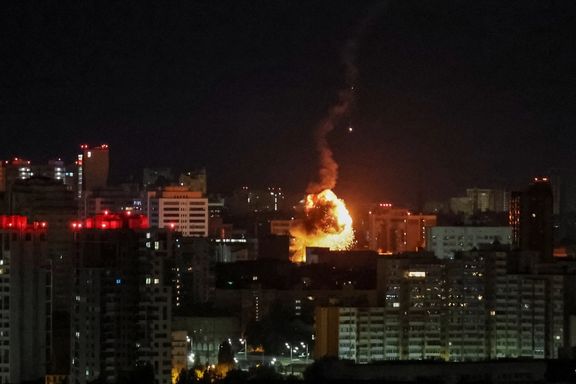
Russia used 32 Iranian-made kamikaze drones to attack Ukraine’s capital Kyiv early on Sunday, in one of the biggest such air raids in recent months.
Blasts were ringing out across the Ukrainian capital and its region for almost two hours and drone debris falling on several of the city's central districts, Ukrainian officials said.
Ukraine's Land Forces said that the country's air defence systems destroyed 25 out of 32 Russia-launched Iran-made Shahed drones, most of which targeted Kyiv and the Kyiv region.
Reuters witnesses heard at least five blasts across Kyiv, and Ukrainian media footage showed a number of cars damaged.
"Drones came onto the capital in groups and from different directions," Serhiy Popko, head of Kyiv's city military administration, said on the Telegram messaging app.
Iran has supplied hundreds of the killer drones to Russia since mid-2022, while denying any role in the war. Western allies have imposed sanctions on many individuals and entities involved in the supply of the weapon but have not increased overall sanctions on Iran. In a highly controversial move, the Biden administration in August released $6 billion of Iran’s frozen funds in South Korea in a hostage deal.
Kyiv Mayor Vitali Klitschko said that one person was injured in the historic Podil neighborhood, and a fire broke out near one of the city's parks.
Debris from downed drones fell on the Darnytskyi, Solomianskyi, Shevchenkivskyi, Sviatoshynskyi and Podil districts, Klitschko and the city's military administration said.
In the Shevchenkivskyi district, drone debris sparked a fire in an apartment, which was quickly extinguished. There were no immediate reports of injuries, Popko said on the Telegram messaging app.
With reporting by Reuters
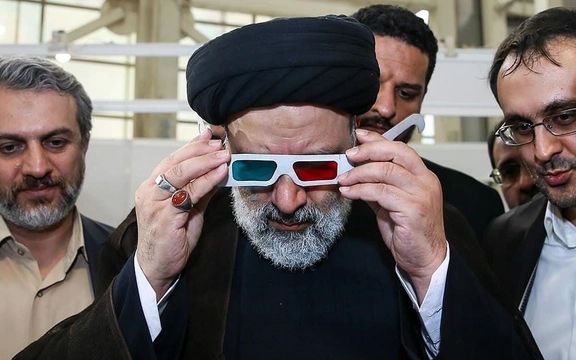
Some political observers in Iran define President Ebrahim Raisi's government as a copycat, based on remnants of former President Mahmoud Ahmadinejad's populist narrative.
However, as noted in a Khabar Online report, also carried by a few other Iranian websites, the Raisi administration at times appears to be a blend of Ahmadinejad's ideas with his reformist predecessor Mohammad Khatami's slogans. The part of the Raisi administration's discourse which is reminiscent of President Khatami's rhetoric is Raisi's frequent allusions to the ideas of Justice and Republic, Khabar Online wrote.
Apart from his political and economic failures, the report maintained that Raisi's attempt to create a new or copied discourse has also failed, though not entirely due to his actions. The idea of a Republic in Iran has been torpedoed by the government's intervention in elections and its undermining of the role of elected bodies such as the parliament and the Assembly of Experts that was supposed to control the Supreme Leader's behavior.
Nonetheless, the Strategic Studies Center, a research body that operates under the President’s Office published a magazine at the end of the first year of Raisi's presidency to outline his discourse. However, the publication did not grab any attention, as all discussions at the time and later were focused on the government's inefficiency and its failure to sort out domestic and foreign problems.
The publication, according to Khabar Online, aimed to emulate what political scientists and economists had compiled to define President Khatami's discourse. However, some of Iranian academics said openly that real progress under President Raisi was way below the level of the discourse. Nonetheless, what Raisi's men put together also used Ahmadinejad's populist rhetoric.
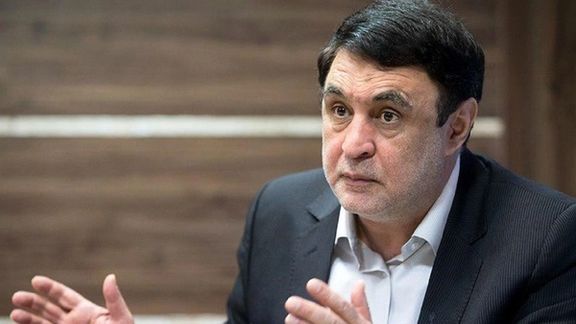
Conservative analyst Nasser Imani pointed out that what Raisi's aides assembled as his discourse does not align with his behavior and his government's performance. Imani pointed out that the government's overall performance, marked by the infiltration of fake revolutionaries in the government. Imani even pointed out the "paradoxical conflict" between Raisi's performance and the ideas of justice and republican principles. This, he said makes Raisi's statements hard to believe.
Meanwhile, in an interview with Rouydad24, Morteza Ezzati, an academic at the Teachers Training University in Tehran remarked that "The Raisi administration is incapable of detecting the country's problems and making decisions to solve them." Referring to the ill-defined ideals and discourse of the administration, Ezzati added, "No ideal is significant enough for which the government could put pressure on the people."
Ezzati further suggested that infiltrators who do not wish for the country's current situation to improve exacerbate the situation to prevent an agreement between Iran and the West that could help end the country’s economic crisis. He views the presence of infiltrators in the government as the most likely explanation for the current political impasse and economic crisis.
Explaining the impact of ultraconservatives on Iranian society and the country's international relations, Ezzati gave the example of advocates of BRICS as a substitute for a nuclear deal with West. He pointed out, "BRICS is an agreement between governments, but it cannot reduce the impact of sanctions because sanctions are not imposed by the private sector. With or without BRICS, any entity in China trying to engage in further trade with Iran will inevitably come under US sanctions."
He reiterated, "The obstacles to trade will be eliminated only with the coming to power of a government in Iran that attaches a high priority to coming to terms with the international order." On the other hand, he argued that "current decision-makers in Iran cannot make decisions that can overcome the economic impasse by ending the sanctions."
Ezzati concluded by stating, "Raisi's government is not capable of advancing a dialogue to secure Iran's interests because it cannot make decisions. However, under excessive pressure, it may take negotiations seriously."
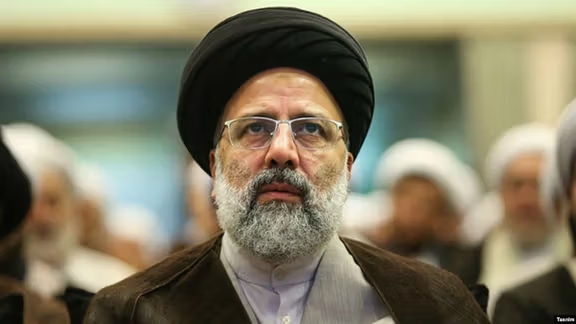
In an unexpected move, the Council on Foreign Relations (CFR) has invited Iran’s President, accused of gross human rights violations, for a meeting this month.
Although no announcement could be found on CFR’s website, a member of the Council, Iranian Jewish well-known writer Roya Hakakian wrote a post on X sharing information that she was invited to the meeting but turned down the invitation. Iran International wrote to the Council on Foreign Relations asking for clarification but has not received a response at the time of this publication.
The date of the meeting is not clear, but Raisi will attend the United Nation’s annual General Assembly taking place in New York City from September 18-26.
Hakakian replied to the invitation saying, “Thank you for this invitation, which, I'm afraid, I must decline. While I am an absolutist when it comes to the value of dialogue, I see the presence of Ebrahim Raisi at the Council on Foreign Relations as a political baptism for a man who has been implicated in countless crimes…”
Raisi, a hardline cleric, who is fully loyal to Iran’s authoritarian rule Ali Khamenei, was elected president in June 2021, in a vote that excluded all the main candidates by a decision of the Guardian Council, a constitutional body composed of Khamenei supporters which reviews candidate credentials. The review is an opaque process and reasons for rejecting a candidate are never transparent.
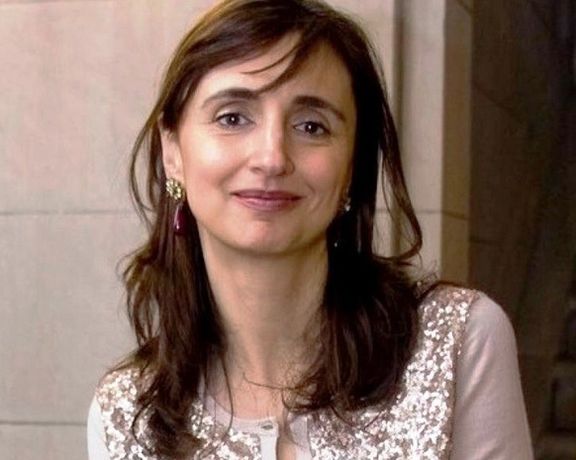
Before becoming a president by Khamenei’s anointment, Raisi spent almost four decades in the Islamic Republic’s notorious “Judiciary”, also controlled by Khamenei since the early 1990s. It was there in 1988 when he was appointed to a small and secret “death commission” that decided to execute thousands of political prisoners serving their sentences.
In an interview with CBS’ 60 Minutes last September Raisi did not deny his involvement.
Young men and women belonging to opposition groups, some violent, were summarily tried without due process and up to 5,000 were killed in prisons.
“Dialogue is reserved for those with whom we have disagreements. For criminals like Raisi, the only venue for conversation must be a court of law,” Hakakian wrote to CFR.
But Hakakian and many other Iranian Americans are furious not just for Raisi’s culpability in one crime in 1988, but also for his role and responsibility as President during the Women, Life, Freedom protests that rocked Iran after Mahsa Amini’s death in hijab police custody last year.
As young people came into the streets to demand answers for her death, security forces armed with shotguns and military grade weapons began shooting them, a behavior that occurred repeatedly for months. The real death toll has not been announced but human rights groups have estimated that more than 500 civilians were killed, hundreds seriously injured and around 22,000 arrested. After hasty trials without due process, seven people were hanged and several face execution and the death penalty.
Raisi and his government have repeatedly said that the protests were riots instigated by the United States and have not held any law enforcement agent of official responsible. In December, he vowed “no mercy” in dealing with the protesters.
“As a proud naturalized American citizen, I cannot help but think that providing such a storied platform to such a man will be legitimizing him, and it is, therefore, an insult to the memory of the protestors who were, and are, fighting for democracy, and it is, therefore, profoundly unamerican,” Hakakian told the Council on Foreign Relations.
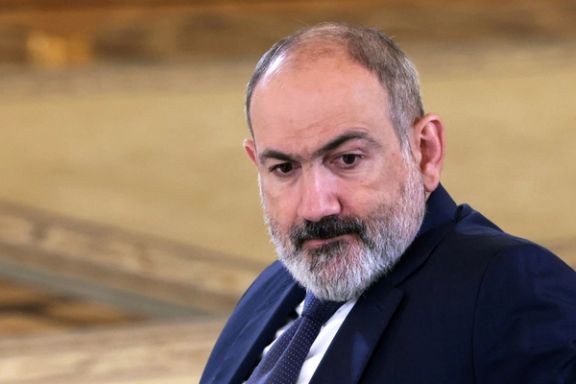
In response to a call from Armenia's prime minister Nikol Pashinyan on Saturday, Iran's President Ebrahim Raisi addressed the evolving situation in the Caucasus region.
Raisi reiterated that the Islamic Republic of Iran is against any alterations to the region's borders, as Azerbaijan threatens Armenia's territory in the south.
He also expressed Iran's readiness as a neighboring power, claiming that Tehran can play a constructive role in preventing further conflicts and preserving the geopolitical stability of the region.
Raisi’s message, conveying this "resolute stance," was communicated through a tweet by Mohammad Jamshidi, the Political Deputy of the President's Office. The message highlighted cooperation with external entities, conducting joint military exercises, and engaging in suspicious travels outside the established 3+3 format are discouraged.
Jamshidi was probably referring to Armenia holding small military drills with the United States in NATO framework.
As tensions escalate between Armenia and Azerbaijan, reports originating from Iranian sources on social media indicate that Tehran has issued a stern warning to Baku, cautioning against potential military actions.
Numerous sources have suggested that Iran's diplomatic channels and high-level meetings have played a pivotal role in delivering a clear message to Azerbaijan, specifically discouraging any aggressive actions in the southern Syunik region of Armenia.
This warning follows recent reports hinting at Azerbaijan's military preparations in the Nagorno Karabakh region, which have raised concerns about potential military actions affecting both the enclave and Armenia. Iran has consistently opposed any Azerbaijani encroachments on Armenian territories.
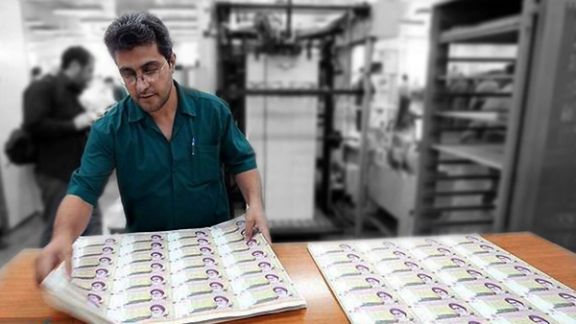
As the Iranian government claims economic successes, a central bank report shows the money supply increased by 45% this year, heralding more high inflation.
President Ebrahim Raisi has been making speeches claiming to have controlled inflation and reduced money printing, promising that the 50-percent inflation rate will drop to 30 percent in March 2024.
However, a report by the Central Bank of Iran (CBI) quoted by media in Tehran says that in April 2023 the money supply showed a 45-percent growth over the same time last year. Money in circulation reached a staggering 88,700,000 trillion rials or around $177.4 billion calculated based on the exchange rate of 500,000 rials per dollar.
This is the highest level of money in circulation in Iran’s history, fueled by the government’s borrowing from the CBI that inevitable leads to printing money without any foreign currency or gold backing.
The Islamic Republic has always been printing excess money in its 44-year history, but at different tempos. When oil export revenues were high enough to support government expenditures, less money was printed. However, when oil prices declined or Iran was subjected to oil export sanctions, printing increased and rial’s value suffered. Sometimes the rial remained relatively stable for a few years, such as the second half of the 2000s, when oil exports and prices were high.
In 1978 before the revolution, one US dollar bought 70 rials, compared with around 4,000 in early 2018, and 500,000 now.
The United States withdrew from the JCPOA nuclear deal in May 2018 and imposed both oil export and international banking restrictions on Iran. That quickly translated into higher inflation and a hasty retreat of the rial. The process has only picked up speed in the past year, as the rial fell from 260,000 to 500,000 per dollar.
Other factors that have not allowed the oil wealth to boost the economy, which has had no growth since 2012, are an inefficient economic system and lack of foreign investments.
Estimates by Iranian economists indicate that 80 percent of the economy is controlled by the government, which controls banking, automakers, and the energy sectors, among many others. Political appointment of managers, nepotism, government interference and bad planning have led to inefficiency.
These factors in addition to international and US sanctions due to Iran’s confrontational foreign policy have prevented any meaningful volumes of foreign investment. This has left the economy mainly dependent on oil export revenues and more vulnerable to sanctions or low energy prices. Lack of investments have even damaged production in the oil and natural gas sectors, with less than one-tenth of investments compared to Saudi Arabia, and little technology infusion. Saudi Arabia’s Aramco energy company has been investing hundreds of billion dollars over the past two decades, with annual investments reaching a staggering $40-50 billion recently.
However, Iran's oil exports have been increasing and reached almost pre-sanctions levels in August, but the additional shipments so far have not translated into a financial improvement, lower inflation and a higher rate for rial.
According to a July report in Aftab News website, affiliated with Iran’s reformists, the government borrowed around $12 billion from four major quasi-private banks in three months ending June 21. To ensure availability of funds, it issued directives to these banks to reduce lending to the private sector, causing the loss of 500,000 jobs amid an already serious economic crisis.
These banks, which already face cash flow problems, rely on the central bank to replenish their reserves, Therefore, whether the government directly borrows from the CBI or from other banks, the money supply increases.






